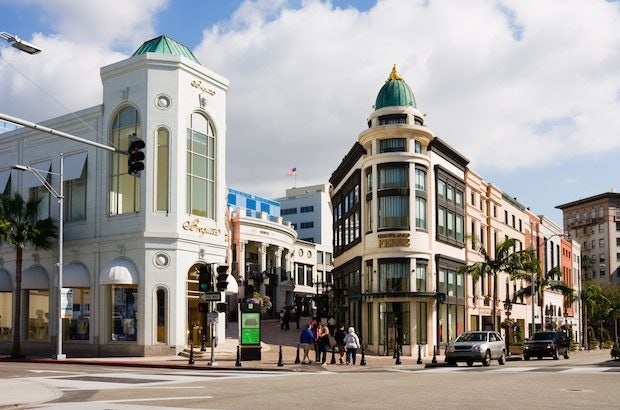
Shopping on Rodeo Drive in Beverly Hills. (Shutterstock)
Taking over 97 million trips abroad in 2013 and spending nearly $130 billion in the process, China’s outbound tourist demographic is understandably critical for major tourist destinations, hotels, brands, and service providers. Dedicating around one-third of their total travel budget to shopping—triple that of the French—tourism Chinese-style invariably involves dropping cash on popular brands.
But as with everything in China, trends and consumers can change at the drop of a hat. Amid Beijing’s ongoing corruption crackdown, which has hit conspicuous consumption within mainland China, summer 2014 has seen the wealthiest and most sophisticated outbound Chinese tourists taking a decidedly more low-key turn.
The changing behavior of China’s outbound affluent is highly visible in Los Angeles—a popular destination for Chinese travelers, students, and wealthy emigrants alike. 570,000 Chinese tourists visited Los Angeles in 2013, according to Discover Los Angeles, a 21 percent increase year-over-year (YoY). Arrivals have stayed strong in 2014, with arrivals in March rising 23 percent YoY and a 7,000-strong delegation spending an estimated $85 million in the Anaheim area this May.
This summer, CLA has seen three overarching trends take shape in Los Angeles, particularly among wealthier, more sophisticated tourists:
Smaller Groups#
: Los Angeles-bound mainland Chinese are traveling in smaller groups than before, mostly with family and close friends. Larger groups this summer have largely consisted of groups of multiple families.
DIY#
: More mainland Chinese are booking their trips independently, and more are opting to stay at more high-end hotels. Group travelers continue to stay at lower-end hotels.
Pragmatism#
: Chinese travelers from top-tier cities are becoming more rational in their spending on luxury goods. Fewer are making purchases in large quantities from single brands, as they diversify their spending and look for a wide range of lesser-known brands.
As Jing Daily and China Luxury Advisors noted in the report “Serving the Global Chinese Customer,” Chinese consumers currently make more than 60 percent of their luxury purchases overseas, representing more than $28 billion in sales. But attracting and selling to the coveted Chinese big-spender is no small task—meeting their expectations and demands requires cultural insight and nuanced service. The emerging trend of small, independent, pragmatic shoppers is here to stay—be on the lookout for these groups to seek out unique experiences globally, as they look to blend in and live like locals.
Knowing broader global trends, as well as those developing in front of our eyes, is key to tapping the ever-changing Chinese traveler. To learn more about welcoming the new generation of Chinese outbound travelers to drive repeat business, boost positive word-of-mouth, and increase footfall and average spend, download Jing Daily and China Luxury Advisors reports here.
Avery Booker is a partner at China Luxury Advisors.
